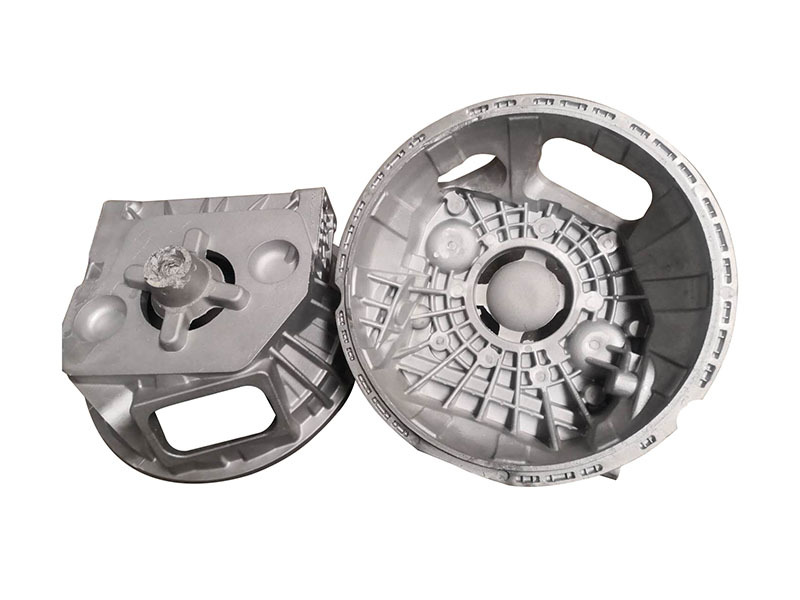Cooling Method of Die Casting Mould
Release time:
2022-06-22
In the die casting process, a high temperature metal solution is forced into a mold cavity, which is cooled by heat exchange with the mold. The die-casting mold should absorb the heat brought by the high-temperature metal solution and dissipate the heat of the die-casting machine through the space. Generally speaking, the heat absorbed is greater than the natural heat dissipation, so the mold temperature will gradually increase with the die casting process. If the mold temperature is too high, it will affect the casting quality and mold life. In order to carry out normal die casting production, it is necessary to keep the mold temperature substantially constant. Cooling method of die-casting mold. Commonly used cooling methods are: extend the die-casting cycle, spray release agent or coolant, or open a cooling channel in the mold, with cold
In the die casting process, a high temperature metal solution is forced into a mold cavity, which is cooled by heat exchange with the mold. The die-casting mold should absorb the heat brought by the high-temperature metal solution and dissipate the heat of the die-casting machine through the space. Generally speaking, the heat absorbed is greater than the natural heat dissipation, so the mold temperature will gradually increase with the die casting process. If the mold temperature is too high, it will affect the casting quality and mold life. In order to carry out normal die casting production, it is necessary to keep the mold temperature substantially constant.
Cooling Method of Die Casting Mould
Common cooling methods are: Extend the die-casting cycle, spray release agent or coolant, or open a cooling channel in the mold, and cool it with cooling water. Extending the die casting cycle will lead to a decrease in production efficiency, and the effect of spraying mold release agent or coolant will be limited. Therefore, water cooling has become the main method of mold cooling.

At present, most of the water cooling of die-casting molds use cooling water directly into the mold and the mold for heat exchange. Among them, foreign die-casting enterprises mostly use special chillers to cool large and complex die-casting molds with high temperature control accuracy, while domestic enterprises generally use tap water for direct cooling, so the mold temperature control accuracy is very poor. Although the direct water cooling effect of the mold is very good, because the water directly contacts the mold to form heat exchange, the thermal shock to the mold is very large, and small microcracks are easily formed inside the mold. If microcracks penetrate the mold surface, it will affect the quality of the casting and the life of the mold. If the method of embedding the cooling water pipe is adopted, although the direct contact between the water and the mold is avoided, there is always a gap between the cooling water pipe and the mold, and the air in the gap is equivalent to forming a heat insulation layer, which will seriously affect the heat transfer and cause the cooling effect. Poor. This is also the main reason why the die-casting mold uses direct water cooling.
At present, the use of die-casting molds has: Fixed-point cooling, linear cooling and circulating loop cooling. Generally speaking, fixed-point cooling is used for casting imports, shunt cones, core pulling and parts with thicker local wall thickness, while linear and circulating cooling is used for overall mold cooling. For the core pin on the mold, the ideal cooling method is a fixed-point cooling method based on high-pressure circulating water. The fixed-point cooling process based on high-pressure circulating water has the following advantages: ①Simple structure, good cooling effect, low processing cost, and convenient processing and maintenance. It is very effective to adjust the temperature gradient after the mold test, and adjustments can be added at any time. It can effectively control the distance between the cooling point and the cavity surface, so as to effectively control the mold temperature.
Key words:
Previous Page
Previous Page:
Recommended News
What is the aluminum alloy casting process?
2022-08-31
How to Avoid Aluminum Alloy Casting Error
2022-08-22
Sales Hotline:+86-18331916658
Sales Hotline:+86-17732979583
Fax:0086-319-5672177
E-mail:pengyuzhuzao@163.com
Address: Dongding Village, Sujiazhuang Town, Ningjin County, Xingtai City, Hebei Province

View mobile phone official website
Copyright©2022 Ningjin Pengyu Auto Parts Co., Ltd.


